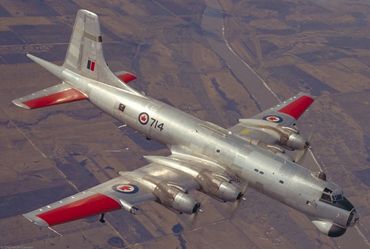canada - royal canadian air force
First introduced in 1955, the Neptune filled a critical gap between the aging Avro Lancaster and the more advanced CP-107 Argus, offering modern anti-submarine warfare (ASW) capabilities at a time when Soviet submarine activity in the North Atlantic was a growing concern.
Canada received 25 P2V-7 Neptunes which were given its own designation Model 826 since the aircraft differed from the other production P2V-7s rolling off the Lockheed Assembly line. When ordered, the RCAF believed that endurance was more important than speed and their specifications omitted the underwing Westinghouse J34 jet engines that were standard on all production Neptunes. During the Neptune's early operational period, the RCAF realized that the J34s were needed to broaden the safety margin if a piston engine failed. Retrofit kits were ordered from Lockheed and Fairey Aviation would install the kits on all Canadian Neptunes starting in 1959.
The aircraft were assigned to No. 404, 405, and 407 Squadrons, operating from bases such as CFB Greenwood in Nova Scotia and CFB Comox in British Columbia. Missions included anti-submarine patrols, anti-shipping surveillance, and maritime reconnaissance. Canadian Neptunes were frequently involved in sovereignty patrols over the Arctic and Atlantic, and participated in multinational exercises such as UNITAS and NATO operations. Their presence helped maintain Canadian control over its vast maritime approaches and contributed to the broader Western defense posture during the Cold War.
Neptune operations were not without incident. The most notable accident occurred on March 23, 1965, when CP-122 serial 24115 crashed near CFB Greenwood during a training flight. The crash was attributed to mechanical failure during a low-level maneuver.
The Royal Canadian Air Force (RCAF) recognized that the Neptune—though a capable interim solution—lacked the endurance and sensor integration needed for extended anti-submarine warfare (ASW) missions over the vast North Atlantic. In response, Canadair had begun development of the CP-107 Argus (company designation CL-28) in 1954, based on the Bristol Britannia airliner but heavily modified with a new unpressurized fuselage, dual bomb bays, and fuel-efficient Wright R-3350 compound piston engines optimized for low-altitude patrols.
The first Argus flew in 1957, and by 1958, it began entering service with Maritime Air Command. As Argus deliveries ramped up, the Neptunes were gradually phased out. They continued to serve in secondary roles and training capacities until their official retirement in 1970. Upon the unification of the Canadian Armed Forces in 1968, the aircraft were redesignated CP-122, though this was largely a retrospective classification.
Several airframes found a second life in civilian roles. In the 1970s and 1980s, ex-RCAF Neptunes were converted into aerial firebombers, for operations in the US and Canada.

